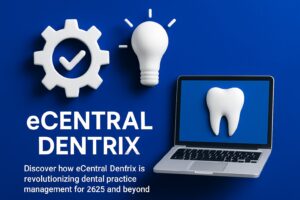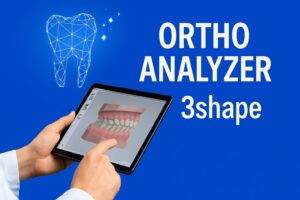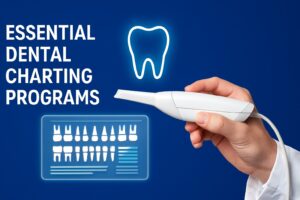Dental practices today face mounting pressure to keep up with changing technology while delivering exceptional care. Yet, many clinics still rely on outdated systems that slow them down and frustrate staff.
As 2025 approaches, the demand for easy dental software is skyrocketing. Practices need solutions that are intuitive, reliable, and ready to support evolving patient and regulatory needs.
Modern software doesn't just save time—it boosts accuracy and leads to happier, more satisfied patients. Streamlining daily tasks means your team can focus on what matters most.
This guide breaks down everything you need to know. You'll get a step-by-step walkthrough of easy dental software, discover essential features, and learn expert tips tailored for 2025.
Read on for actionable insights, real user experiences, and all the resources you need to transform your practice with confidence.
Understanding Easy Dental Software: What’s New for 2025?
Dental practices have come a long way from paper files and manual ledgers. The journey to modern, digital solutions has transformed the way teams operate. As we approach 2025, easy dental software stands at the forefront of this evolution, promising smarter, faster, and more secure workflows.
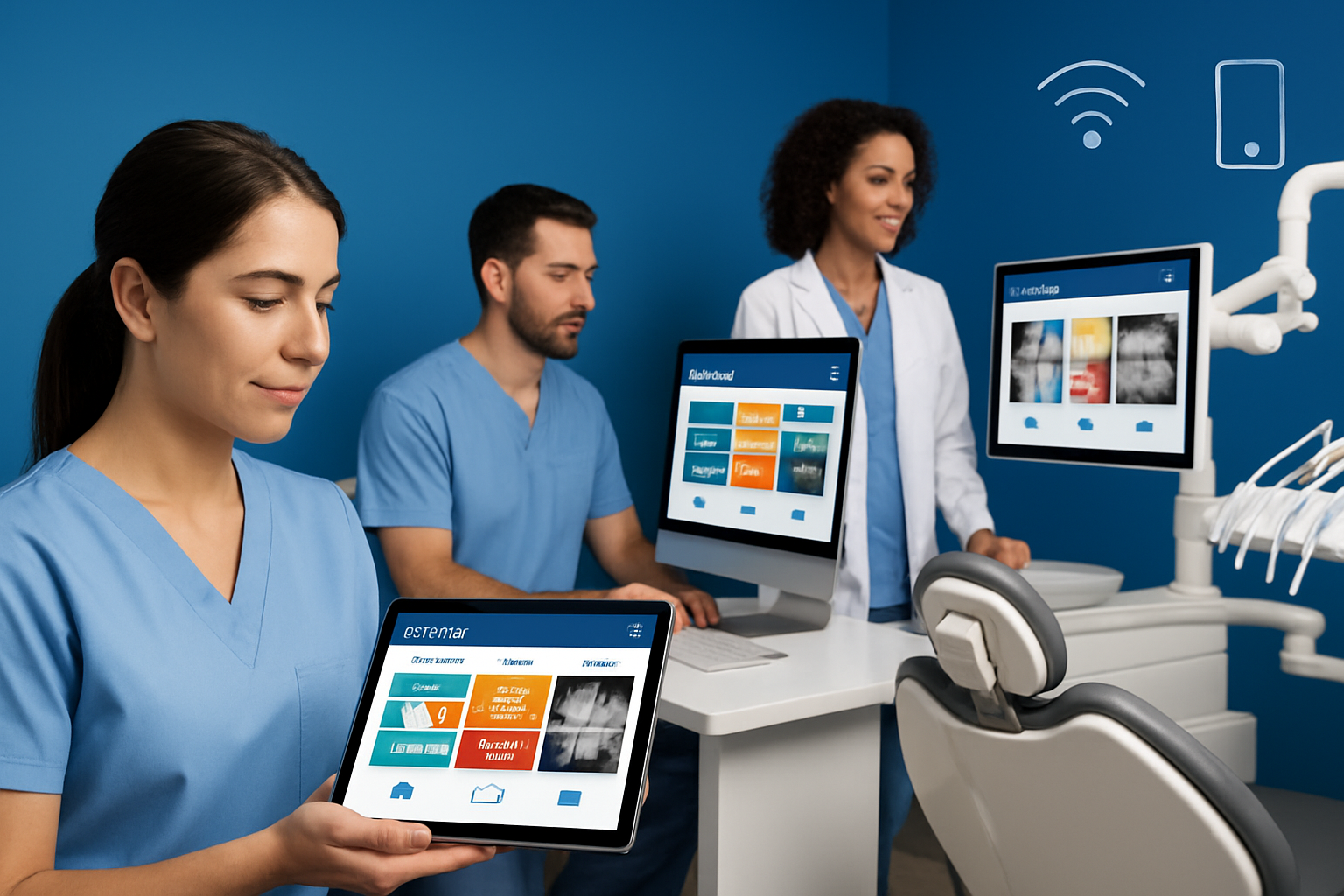
Evolution of Dental Software and Market Trends
Dental management software began as simple scheduling and billing tools. Over the years, the landscape shifted rapidly to digital, enabling practices to ditch paperwork and embrace efficiency. By 2025, more than 1 million businesses have implemented digital dental solutions, driven by the need for reliability and speed.
This shift is powered by key trends: cloud adoption, mobile device access, and artificial intelligence. Practices now expect access to records and schedules from anywhere, on any device. AI-driven features help automate tasks and identify workflow bottlenecks. Easy dental software responds to these demands, offering seamless integration with imaging, billing, and scheduling.
Regulatory compliance is also a top priority. With stricter HIPAA rules, cybersecurity threats, and data portability requirements, practices must protect patient information. Easy dental software is designed with these challenges in mind, simplifying compliance and reducing risks.
Easy dental software has become a solution for administrative headaches, complicated workflows, and billing errors. As practices grow, scalability is crucial, and the 2025 versions deliver flexibility for offices of any size.
Core Benefits of Easy Dental Software
Why are so many practices choosing easy dental software? The answer lies in its streamlined approach to daily operations. Appointment scheduling and calendar management become effortless with drag-and-drop features and automated reminders. Patient records are more accurate and accessible, supporting better care.
Billing, insurance, and claims are automated, saving time and reducing mistakes. Security is central, with HIPAA-compliant data protection and customizable access for different staff roles. Practices can tailor modules to fit general, pediatric, or orthodontic specialties.
Real users praise the ease of use and efficiency gains. In fact, 27% of users rate easy dental software as "very easy to use." For those interested in comparing these benefits across different platforms, Dental software reviews and ratings provide a helpful resource.
With these advantages, easy dental software empowers teams to focus on patient care, not paperwork.
Key Differences in 2025 Versions
The 2025 updates bring notable changes. Practices can now choose between cloud-based and on-premise options, depending on their needs. The new user interface is more intuitive, with icon-based navigation and color-coded scheduling for faster access.
Integration capabilities have improved, allowing connections with QuickBooks, imaging systems, and patient communication tools. Automated reminders and messaging keep patients engaged and reduce no-shows.
Easy dental software in 2025 stands out for its ability to adapt—whether you’re a solo practitioner or a multi-location clinic, the right features and integrations are now within reach.
Step-by-Step Guide: Setting Up and Using Easy Dental Software
Setting up easy dental software doesn’t have to be overwhelming. With the right approach, your practice can move from outdated systems to streamlined operations in just a few steps. Let’s break down the process so you can make the most of your investment and deliver seamless care from day one.
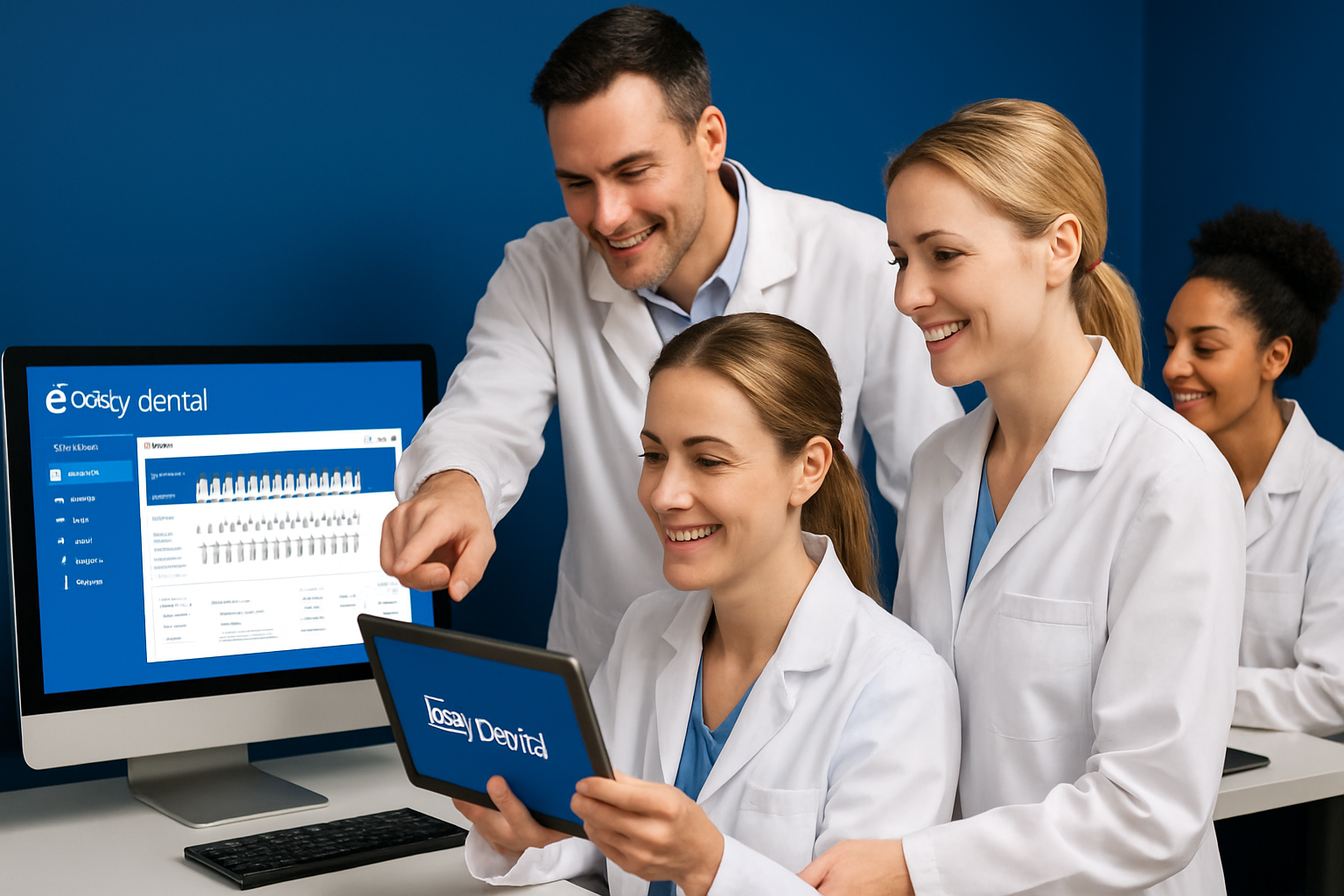
Step 1: Software Selection and Initial Setup
The first step to implementing easy dental software is understanding your practice’s needs. Are you a solo provider, or do you manage a larger clinic with multiple specialties? Practices with 1-3 providers might prioritize simplicity, while those with 11+ providers may need scalability and advanced features.
Consider whether cloud-based or on-premise deployment suits your workflow. Cloud solutions offer remote access and automatic updates, while on-premise setups give you direct control over data. Make sure your hardware meets system requirements before purchasing.
Here’s a quick comparison:
| Practice Size | Ideal Deployment | Starting Price |
|---|---|---|
| 1-3 Providers | Cloud/On-premise | $3,500 |
| 4-10 Providers | Cloud | Custom Quote |
| 11+ Providers | Cloud | Custom Quote |
To ensure you’re making an informed decision, check out this practice management software overview for essentials every dental practice should know.
Step 2: Installation and Configuration
Once you’ve selected your easy dental software package, installation is straightforward. Download the installer, follow on-screen prompts, and the software will guide you through basic setup. Assign user accounts and define permissions so each team member has the right access.
Set up provider-specific calendars to avoid double bookings and streamline your day. If you’re moving from another system like Dentrix, take advantage of data migration support to import patient records, schedules, and billing information securely.
Double-check that all information has transferred correctly. This step is crucial for maintaining data integrity and ensuring a smooth transition.
Step 3: Customizing for Your Practice
Customizing easy dental software is where you make it truly fit your workflow. Start by tailoring modules such as charting, billing, and scheduling. Add your insurance carriers and billing codes to automate claims processing and reduce manual entry.
Integrate imaging tools so X-rays and scans are accessible from patient charts. Many practices also benefit from digital forms and e-prescribing options, which can be activated within the software.
Whether you specialize in pediatrics or orthodontics, you can configure workflows to fit your specialty. This flexibility helps you deliver personalized care while keeping operations efficient.
Step 4: Training and Onboarding Staff
A successful transition to easy dental software depends on how well your team adapts. Use built-in tutorials, user manuals, and 24/7 customer support to guide your staff. Schedule focused training sessions for front desk staff, assistants, and providers so everyone understands their role in the new system.
Break down training into manageable modules. Encourage hands-on practice and address questions in real-time. Many clinics report that an intuitive interface leads to faster onboarding and higher staff confidence.
Continuous learning is key—revisit training resources as new features are released or as your team grows.
Step 5: Going Live and Best Practices
Before fully switching to easy dental software, run both your old and new systems in parallel for a short period. This approach lets you spot errors or workflow bottlenecks before they impact patient care.
Monitor key workflows closely. Schedule regular data backups and audits to protect against data loss. Encourage staff to share feedback so you can address issues quickly.
Clinics often see immediate benefits: improved efficiency, reduced no-shows, and smoother billing cycles. With these best practices, your transition to easy dental software will be smooth and set your practice up for long-term success.
Must-Have Features in Easy Dental Software for 2025
Staying ahead in 2025 means choosing a platform that delivers more than just basic management. The right easy dental software empowers your team, boosts efficiency, and enhances the patient experience. Let’s explore the must-have features that set today’s leading solutions apart.
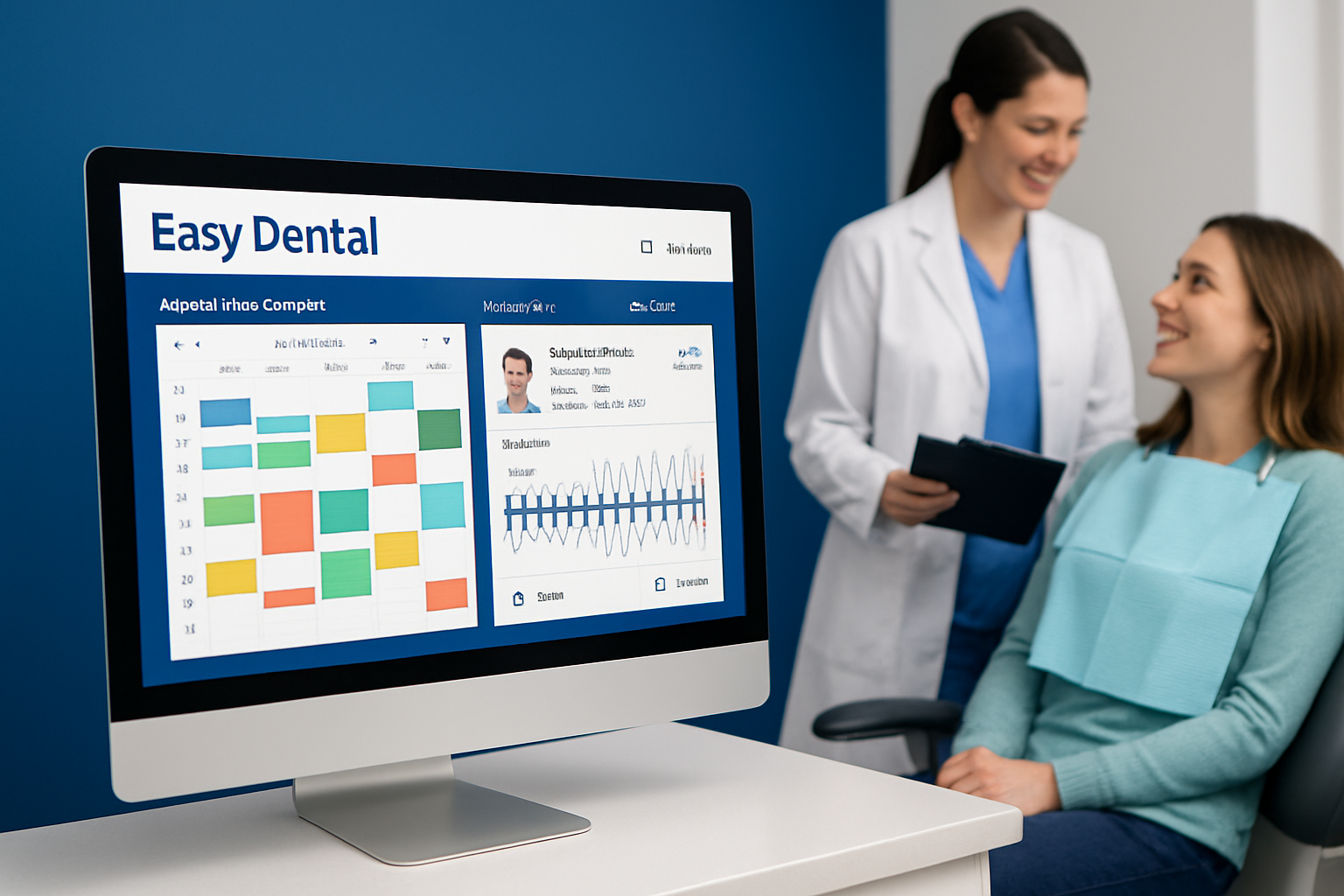
Appointment Management and Scheduling
Efficient appointment scheduling is the backbone of any successful practice. Easy dental software in 2025 offers a drag-and-drop calendar interface, making it simple to assign providers and manage daily workflows.
- Color-coded scheduling helps identify provider assignments at a glance.
- Automated patient reminders and confirmations reduce no-shows.
- Waitlist management tools make rescheduling quick and seamless.
These features allow practices to optimize their schedules, minimize gaps, and ensure every patient receives timely care. With easy dental software, front desk staff can handle high call volumes without missing a beat.
Digital Charting and Imaging Integration
Seamless digital charting is a game-changer for accuracy and accessibility. Easy dental software now integrates directly with digital X-ray and imaging systems, allowing providers to view radiographs and treatment history within a single chart.
- Comprehensive patient records include notes, images, and treatment plans.
- Integration with imaging systems eliminates manual data transfer.
- Quick access to radiographs speeds up diagnosis and treatment planning.
Users highlight the ability to toggle between clinical notes and images without losing context. This integration streamlines the workflow and reduces errors, keeping patient care at the center.
Billing, Insurance, and Claims Automation
Automating billing and insurance is essential for healthy cash flow. Easy dental software automates claims submission, tracks reimbursement status, and customizes billing codes to fit your practice’s needs.
- Automated claims submission and real-time tracking.
- Customizable payment plans and billing codes.
- Integration with accounting tools like QuickBooks and Peachtree.
Practices report faster reimbursement cycles and fewer billing errors. With all financial data centralized, administrative staff can focus on patient service rather than paperwork. For a broader look at the latest innovations, check out the Top Features of Dental Practice Management Software in 2025.
Patient Communication Tools
Modern patient engagement tools are a hallmark of easy dental software. Secure patient portals let patients manage appointments and access records, while two-way messaging keeps communication clear.
- Automated appointment reminders and confirmations.
- E-prescribing and digital forms for streamlined intake.
- Secure messaging for HIPAA-compliant communication.
These features boost patient satisfaction and reduce administrative workload. Practices using easy dental software often report higher retention and more positive reviews.
Security, Compliance, and Mobile Access
Security is non-negotiable in 2025. Easy dental software provides robust, HIPAA-compliant encryption and role-based access to safeguard patient data.
- End-to-end encryption and detailed audit trails.
- Mobile app support for iOS and Android devices.
- User permissions tailored to each team member’s role.
Providers and staff can securely access records on the go, ensuring continuity of care. Knowing that sensitive data is protected gives peace of mind to both teams and patients.
Easy dental software with these must-have features ensures your practice is ready for the demands of 2025. By focusing on usability, integration, automation, and security, you set the stage for long-term success.
Integrating Easy Dental Software with Your Practice Workflow
Implementing easy dental software into your daily operations isn’t just about installing a new tool—it’s about transforming the way your team works, communicates, and delivers care. A thoughtful integration approach will help any dental practice unlock peak efficiency, minimize disruptions, and maximize the return on investment.
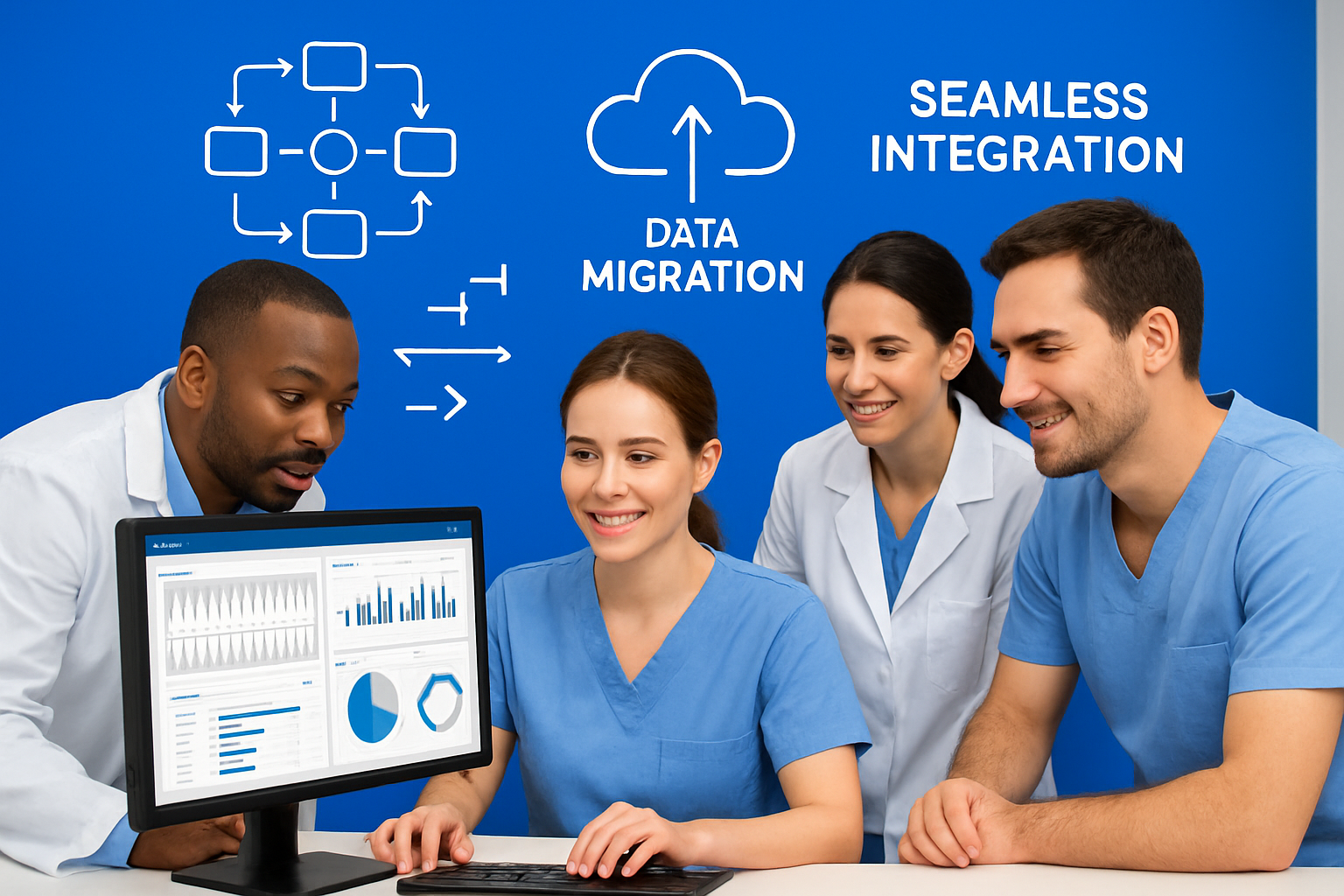
Workflow Mapping and Process Optimization
Start by mapping out your current processes. What are the key steps for scheduling, billing, and record-keeping? With easy dental software, you can align each software module to these essential workflows.
- Use the appointment scheduler to automate bookings and reduce front desk stress.
- Leverage billing automation to speed up claims and minimize manual errors.
- Assign digital charting to streamline clinical documentation.
For example, many practices see dramatic improvements by connecting scheduling directly to billing—appointments convert to charges with a few clicks, reducing revenue leakage. This mapping ensures the software supports, rather than disrupts, your team’s daily flow.
Data Migration and Legacy System Integration
Migrating your existing patient data is a crucial step. Easy dental software offers robust tools for importing data from legacy systems or spreadsheets, ensuring a smooth transition.
- Identify data sources: old software, paper files, or spreadsheets.
- Clean and format data to prevent errors during import.
- Use built-in migration support, especially if moving from platforms like Dentrix.
During migration, validate data accuracy and resolve duplicates. Practices often benefit from phased imports—start with active patients, then archive historical records. With thorough planning, you’ll maintain continuity of care while upgrading your technology.
Third-Party Integrations and Add-Ons
Easy dental software isn’t an island. Connecting it with imaging, lab, and payment solutions creates a seamless ecosystem. Integration with accounting tools like QuickBooks or Excel enables streamlined financial tracking and reporting.
- Link dental imaging systems for instant access to X-rays and photos.
- Sync payment processing for real-time billing.
- Export reports to Microsoft Excel for custom analysis.
For a broader view of top integration-ready platforms, check out the Top 5 dental software options to see how easy dental software compares in flexibility.
Change Management and Staff Adoption
Rolling out easy dental software requires more than technical setup—it’s about people. Clearly communicate the benefits to your team and address any concerns upfront.
- Schedule hands-on training for all roles: front desk, clinical, and billing.
- Set realistic timelines for each integration phase.
- Encourage feedback and provide ongoing support.
User reviews highlight the value of responsive vendor assistance and regular training refreshers. Practices that invest in staff readiness experience smoother adoption and higher morale.
Measuring Success and Continuous Improvement
Once easy dental software is live, track key performance indicators (KPIs) to measure impact:
| KPI | Baseline | Post-Integration Target |
|---|---|---|
| Appointment No-Shows | 12% | 5% |
| Billing Turnaround | 10 days | 3 days |
| Patient Satisfaction | 4.0/5 | 4.7/5 |
Regularly update the software and schedule team check-ins for feedback. Continuous improvement is key—practices report sustained efficiency gains and happier patients when they make optimization a habit.
Integrating easy dental software is a journey, not a one-time event. With the right strategy, your practice can enjoy smoother workflows, better patient care, and a future-ready foundation.
Real User Experiences: Reviews, Pros, and Cons
Getting real-world insight is crucial when evaluating easy dental software. User reviews offer a clear look at how this tool performs in daily dental practice, highlighting both strengths and potential pitfalls.
User Ratings and Satisfaction Data
When it comes to easy dental software, user ratings tell an interesting story. On platforms like Software Advice and Software Finder, the software averages 3.6 out of 5 stars. The satisfaction breakdown shows 27% of users give it five stars, another 27% rate it four stars, and 27% opt for three stars. Only 20% give it two stars, with no one-star ratings reported.
Ease of use stands out, with a 3.9/5 score. Value for money, support, and functionality hover around 3.3–3.4/5. These numbers reflect a solid, dependable solution for many practices. For broader context on software market trends and user adoption, see the Dental Practice Management Software Market Trends 2025-2035.
Positive User Feedback and Success Stories
Many dental teams praise easy dental software for its user-friendly design. In particular, new practices and smaller clinics find the system simple to set up and navigate. The intuitive interface means less time spent on training and more on patient care.
One user shares, “Very easy to use. It is a very simple software that gets the job done.” Stories like these show how easy dental software can remove barriers for staff and boost productivity. Practices often report a smooth onboarding process and a noticeable uptick in efficiency.
Common Pain Points and Criticisms
Not all feedback is positive. Some users mention limitations in customization and a narrower feature set compared to larger, more complex platforms. Reports of occasional software glitches and slow support response times appear in several reviews.
A user notes, “Software is full of glitches… support may take weeks to fix.” For some, these challenges can hinder daily operations. It’s important to weigh these factors when considering easy dental software, especially for practices with specialized or evolving needs.
Feature Highlights from Users
Despite criticisms, users highlight several features that make easy dental software stand out. Seamless integration with imaging exams receives consistent praise, allowing dental teams to access radiographs directly within patient charts.
Scheduling, charting, and billing modules are also recognized for their efficiency. One reviewer states, “Great software for beginning dentist or new private low-profile dental office.” These features help streamline daily workflows and reduce administrative burden for many practices.
Lessons Learned and Best Practices
User experiences reveal valuable lessons for maximizing easy dental software. Embracing cloud-based solutions is recommended for future-proofing, especially with rising concerns about cybersecurity and data access.
Ongoing training and regular software updates are key to maintaining peak performance. Long-term users suggest proactively engaging with vendor support and scheduling periodic refresher sessions. These best practices help practices get the most from easy dental software and avoid common pitfalls.
Alternatives and When to Consider Them
While easy dental software suits many clinics, some users seek alternatives with greater customization or advanced analytics. Top competitors include ModMed, DrChrono, and Kareo, each offering distinct advantages.
For those interested in exploring another leading user-friendly platform, the Open Dental software guide provides a detailed comparison. Practices needing more robust marketing tools or reporting features may find these alternatives better suited to their needs.
Choosing the Right Easy Dental Software Plan and Support for Your Practice
Selecting the best easy dental software plan can feel overwhelming, especially with so many options tailored for different practice sizes and specialties. To help you make a confident choice, let’s break down pricing, support resources, evaluation tips, and how to future-proof your investment as you prepare for the years ahead.
Pricing Models and What’s Included
When evaluating easy dental software, pricing transparency is crucial. Most vendors offer a one-time licensing fee starting at $3,500, with tailored quotes for larger or multi-location practices. This fee typically includes core modules such as appointment scheduling, billing, digital charting, imaging integration, and a secure patient portal.
Some plans may include initial data migration and basic training, while others offer these as add-ons. There’s no free trial or free version, so request a personalized demo before committing. For a broader market perspective, check the Dental Practice Management Software Market Size, Share & Trends Analysis Report to compare features and pricing trends across leading solutions.
Support and Training Resources
Reliable support is a must for any easy dental software investment. Leading providers offer 24/7 live representative support, ensuring rapid troubleshooting and guidance. Comprehensive user manuals, interactive tutorials, and active customer forums are often available to help your team master new workflows quickly.
Many practices highlight the value of responsive support when onboarding new staff or navigating software updates. Prioritize vendors with extensive training resources and a solid reputation for customer care, as this can significantly reduce downtime and frustration.
Evaluating Fit for Your Practice Size and Specialty
Not every easy dental software solution fits all practice types. Solo practitioners, small group clinics, and multi-specialty offices each have distinct needs. Look for customizable modules, such as pediatric charting or orthodontic scheduling, to align the software with your specialty.
For example, pediatric clinics may benefit from flexible scheduling and growth-tracking features, while orthodontic practices might prioritize imaging and treatment planning tools. Assess the scalability of your chosen plan to ensure it supports your growth over time.
Key Questions to Ask Before Buying
Before choosing easy dental software, ask yourself:
- Should you opt for cloud-based or on-premise deployment?
- What third-party integrations are essential for your workflow?
- How will the software handle data migration and safeguard sensitive patient information?
- What are the ongoing support and update policies?
Taking time to answer these questions will help you avoid costly missteps and ensure a seamless transition.
Transitioning from Easy Dental to Other Solutions
If you’re already using Easy Dental, be aware that official support ends December 2023. Many practices are migrating to Dentrix or exploring comparable platforms. For a smooth transition, plan for data export, thorough staff retraining, and a period of running both systems in parallel to minimize disruptions.
Check whether your new provider offers dedicated migration assistance and review their protocols for securing historical patient data.
Future-Proofing Your Dental Practice
In today’s fast-evolving digital landscape, it’s vital to choose easy dental software that keeps pace with regulatory changes and technological innovation. Cloud-based platforms, AI-driven features, and robust security measures are becoming industry standards. For insights on what’s next, explore Top Trends in Dental Software for 2025: What Practices Should Prepare For, which highlights upcoming features and best practices for staying ahead.
Investing in scalable, secure, and user-friendly solutions will help your practice thrive—now and in the future.
